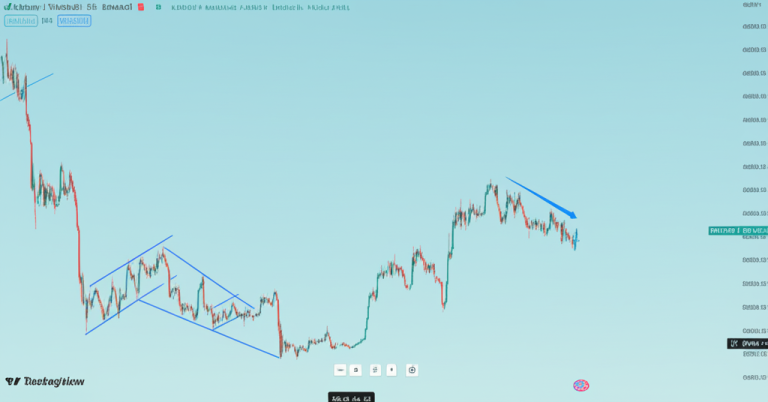The U.S. dollar has shown a degree of stability lately, even as underneath currents of trade frictions and domestic politics keep the narrative dynamic. With the dollar index hovering around the mid-to-high 90s, investors are weighing the resilience of the American economy against potential policy shifts and geopolitical headwinds. The path forward remains a balancing act between solid domestic data and lingering uncertainties that could tilt risk sentiment and currency flows in the weeks ahead.
Background and current status
The dollar’s recent performance reflects a partial rebound from a September lull but remains within a broader downtrend that has characterized much of the past year. Improvements in certain U.S. macro indicators have given traders reason to expect the Fed to adjust its stance gradually rather than deliver further aggressive tightening. Inflation pressures persist, yet some cooling signs in core price measures have reduced the urgency for aggressive rate cuts in the near term. Markets are now pricing in a slower pace of monetary easing, contingent on continued strength in growth and stubborn inflation.
Technically, the DXY’s positioning around support zones in the mid-to-high 90s has become a focal point. If prices hold above roughly 96.60–97.60, the case for a stabilized or modestly firmer greenback strengthens in the near term; a breach could rekindle momentum toward the weaker side of the range. This technical backdrop coexists with fundamental questions about whether the U.S. economy can sustain relative outperformance in a cooling global growth environment.
On the domestic front, the risk of fiscal disruption—such as a potential government funding standoff or debt-ceiling debate—adds another layer of complexity. Such political risk tends to amplify volatility in risk-off episodes, which historically have favored the dollar as a safe-haven asset, even as the medium-term fundamental picture remains mixed.
The impact of U.S.-China trade tensions
Trade relations with China remain a central external risk factor shaping dollar dynamics. Extended tariff rhetoric, supply-chain realignments, and the prospect of policy responses to market uncertainty all feed into global risk appetite.
– When tensions escalate, risk aversion tends to rise. Investors often seek the relative safety and liquidity of the dollar, supporting its valuation against a broad basket of currencies.
– Conversely, a de-escalation or pragmatic negotiation outcome tends to ease risk premiums, potentially softening the dollar as investors rotate into higher-yield or cyclical assets elsewhere.
– For emerging-market (EM) assets, heightened trade friction generally translates into pressure on local currencies as capital inflows retreat and funding costs rise, which in turn can amplify the dollar’s strength on a cross-border basis.
That said, a sustained deterioration in global growth tied to trade frictions could eventually erode the dollar’s defensive appeal. If the world economy slows meaningfully, the U.S. economy would need to demonstrate superior resilience to keep the dollar buoyant; otherwise, the relative appeal of U.S. assets might wane, inviting a broader repricing across major pairs. In the near term, the tension between using the dollar as a safe haven and the drag from weaker global demand creates a tug-of-war that traders are actively calibrating.
U.S. political factors at play
Domestic politics increasingly color currency movements because fiscal policy choices and debt-management credibility influence investors’ assessment of long-run macro stability.
– Budget stalemate risks: A sharp confrontation over appropriations can raise concerns about government functioning and the timeliness of economic-support measures, introducing volatility into dollar pricing.
– Debt ceiling dynamics: The capacity of policymakers to avert a technical default—via timely extension or pragmatic compromise—plays a crucial role in shaping market expectations for the dollar’s stability and the tempo of potential rate adjustments.
– Policy signaling: Political uncertainty can complicate the Federal Reserve’s decision-making, as lenders and market participants weigh how fiscal commitments and growth projections interact with inflation dynamics and financial conditions.
In environments where political headwinds intensify, the dollar can exhibit heightened fluctuations as traders reassess the durability of U.S. macro support. A sustained improvement in fiscal clarity and political consensus, by contrast, can reinforce a more orderly trajectory for U.S. dollar valuation, especially if accompanied by credible inflation and growth data.
Monetary policy and market expectations
The Fed’s policy stance remains a critical driver of dollar direction. If the policy rate remains elevated with a clear bias toward patience on rate cuts, the dollar can maintain a degree of refreshment through higher carry and perceived policy credibility. However, the market is listening for signals about the trajectory of inflation and growth, and how quickly easing is warranted if the post-pandemic economy cools or if external demand softens.
– Short-term outlook: With inflation still hovering around target-inflation territory and labor market strength a persistent feature, a cautious approach to rate cuts may be warranted. This can provide the dollar with near-term support, especially if global risk sentiment remains fragile.
– Medium-to-long-term: If growth slows meaningfully and inflation trends move decisively toward target, the timing and scale of possible rate reductions will come into sharper focus. As market expectations shift, the dollar could transition from a defensive position to a broader reflation/relative value play depending on how other major economies manage their own cycles.
– Cross-asset implications: The policy mix—higher U.S. rates relative to some peers, but persistent inflation—could keep the USD in a nuanced stance, where it outperforms in risk-off episodes but yields to weakness in a broadening global recovery that reignites risk appetite.
Traders will be watching for rate-path guidance, inflation surprises, and evolving assessments of the labor market’s resilience. Any shifts in the Fed’s communication that tilt probability toward earlier or more decisive tightening or easing will be a primary lever for the dollar’s next move.
Major currency pairs: current texture and implications
– USD/JPY: The yen remains under pressure, with the pair trading near a significant intervention range. The impulse to buy the dollar strengthens when risk-off mood rises, but the BoJ stance and structural factors in Japan could limit long-run upside unless U.S. growth outpaces Japan’s trajectory. If the currency pair edges toward the 150 level again, policy anxiety and intervention risk could reemerge as market participants reassess macro differentials.
– USD/INR: The rupee has come under pressure as global liquidity conditions and risk sentiment shift. A high USD tends to pressure EMFX, particularly when global growth signals weaken. For long-term resilience, India would benefit from domestic reforms and steadier external demand to offset dollar strength.
– EUR/USD: The euro area’s recovery remains fragile, with growth momentum and inflation dynamics acting as counterweights to euro appreciation. If growth disappoints or inflation sticks above target for longer, EUR/USD is likely to stay range-bound around the mid-1.1s, with a potential drift higher only if European data show a clear and sustainable improvement.
– USD/CAD: The Canadian dollar often tracks commodity prices and broader risk sentiment. Trade tensions and global demand for commodities influence CAD more than the USD itself in the near term. Weakness in commodity markets or a broad risk-off move could push USD/CAD higher, while a commodities-led rally might restrain dollar strength against the loonie.
– Other commodity and high-beta currencies have tended to mirror global risk appetite, with sharper moves during acute episodes of risk aversion or optimism.
In aggregate, the major pairs suggest a dollar that remains resilient in the face of cross-currents but not immune to shifts in global demand and risk appetite. The balance of growth differentials, policy paths, and geopolitical developments will determine whether the dollar maintains its current footing or experiences a broader re-pricing.
Outlook and risks
短期展望:In the near term, the dollar is likely to hover within a defined range around the current support zone, with a bias toward slight consolidation if data remains mixed but with a gently firm tilt if the U.S. economy continues to outperform expectations. The interplay between better-than-expected labor market data and persistent inflation will be decisive, along with any developments in U.S.-China trade talks and political negotiations at home. If the data reinforce the narrative of resilience without runaway inflation, the dollar could sustain a modestly firmer tone; if inflation cools more quickly than forecast or if political friction eases, a mild retracement could unfold.
中期展望:As global growth dynamics become clearer, the dollar’s trajectory will depend on whether U.S. policy normalization moves ahead and how other major economies manage their cycles. A gradual global recovery could dampen the dollar’s relative strength, particularly if other regions demonstrate steadier inflation convergence and credible growth trajectories. Conversely, if global risks intensify and the U.S. economy remains comparatively robust, the dollar could retain its focal role as a safe-haven currency and funding currency for global traders.
风险因素包括但不限于:双方贸易冲突升级的风险、全球增长放缓的持续证据、财政政策的不可预测性、以及其他央行的政策路径对比。这些因素都可能导致美元在短期内出现突发波动,或者促使市场重新定价对未来利率路径的预期。
长期挑战:美元的全球储备货币地位和流动性优势长期存在,但它也面临估值回归的压力,特别是在全球增长放缓、贸易关系持续紧张、以及全球央行逐步实现更均衡的货币政策框架时。若全球经济逐步实现更广泛的多极化,美元的主导地位可能被再平衡,但短期内其作为全球资金市场核心的地位仍具备支撑力。
结语:稳健与挑战并存的美元路径
美元的稳健表现并非简单的“强势”,而是多重因素共同作用的结果。其在全球金融体系中的核心地位继续为市场提供流动性与安全性,但外部冲击与内部政治经济的不确定性也使其前景充满挑战。短期内,贸易紧张与政策预期、以及美国财政动态将持续塑造汇率波动的节奏;中长期则取决于全球需求格局、货币政策的调整步伐,以及各国增长与通胀动态之间的相互作用。投资者在追逐收益的同时,也需警惕宏观环境的转变,及时调整策略,以应对可能的急剧波动和趋势变化。
在这一复杂交汇点,美元的未来走向并非单线性的强或弱,而是一种在不确定性中寻找平衡的过程。稳健的金融基础、清晰的政策信号以及对全球经济健康的持续关注,将是驱动美元走向的关键因素。
資料來源:
[3] www.xe.com
[4] wise.com
[5] www.x-rates.com
[7] www.x-rates.com
Powered By YOHO AI





